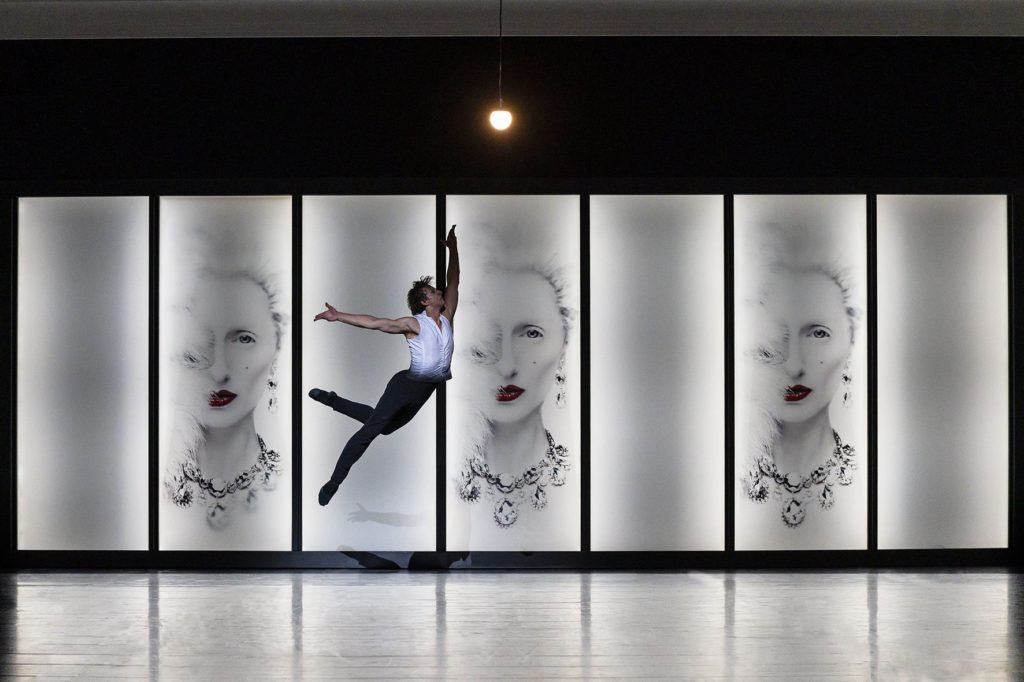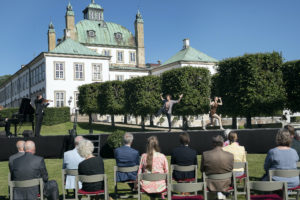Copenhagen, August 2020 - Vancouver Ballet Society
- Home
- City Reports 2020 - 2023
- Copenhagen, August 2020

By Anne-Marie Elmby
COVID-19 was already spreading around the world when, on March 6, the Danish government advised physical distancing and events with more than 1,000 people had to be cancelled or postponed. Copenhagen’s Royal Theatre, where the Royal Danish Ballet is based, continued performances with restricted admission; six days later, they cancelled everything. This was a disappointing turn of events for everybody involved in the first Danish performance of John Neumeier’s Mahler’s Third Symphony, which should have opened March 15. Fortunately, Neumeier’s 1975 ballet — featuring dancers, alto soloist, women’s and boys’ choirs, and full symphony orchestra — is now scheduled to open in May 2021, replacing La Bayadère.
The Royal Theatre gave each company dancer a 1.5 x 2 metre floor vinyl to use for daily online classes in their sitting rooms or kitchens before they were sent on early vacation. The ballet’s artistic director, Nikolaj Hübbe, encouraged mutual contact via email or mobile, which has strengthened the family bond between company members. In mid-July, the theatre was allowed to open for company class, giving the dancers time to get back in shape before the season opens in September with Twyla Tharp’s Frank Sinatra ballet, Come Fly Away. The auditorium will have to be kept to half capacity, leaving every second seat empty.
During the lockdown, the Royal Theatre opened up a goody bag of performances on their website. Another initiative was to match dancers with musicians from the Royal Danish Orchestra, who together created small videos in their homes or at various outdoor spaces. Many people throughout Copenhagen, confined in their flats, got a surprise when Royal Ballet pianist Alison Smith set up her portable piano in their backyard and accompanied Ida Praetorius and Ryan Tomash in a pas de deux from Neumeier’s Lady of the Camellias.
Russian-born ballerina Maria Kochetkova, who in 2019 left San Francisco Ballet for life as a freelance artist, was here on March 14 when the Danish borders closed, preparing projects with her frequent partner Sebastian Kloborg. In April, they were filmed in Benjamin Millepied’s pas de deux Closer, performing in an eerily empty Copenhagen.
Jens-Christian Wandt, founder and producer of Verdensballetten (World Ballet) — made up of dancers who come together for the summer from English, German and Russian companies — had to cancel the company’s 13th annual summer tour of Denmark, set to include Sweden and northern Germany this year. Instead, Wandt arranged a national tour with Danish-based artists, featuring Ida Praetorius and Liam Redhead from the Royal Danish Ballet.
Ida Praetorius was also part of the online fundraiser to provide COVID-19 relief, Swans for Relief, initiated by American Ballet Theatre’s Misty Copeland. In a six-minute video set to the familiar Camille Saint-Saëns score, 32 ballerinas from 14 companies around the world joined forces in a collective performance of Fokine’s The Dying Swan (Le Cygne), each one filmed alone at home.

Denmark’s ballet-loving Queen Margrethe II cancelled all events in connection with her 80th birthday in April. At one of those events, Royal Danish Ballet dancer and up-and-coming choreographer Tobias Praetorius (Ida Praetorius’ brother) would have received the late Queen Ingrid’s Grant of Honour. Instead, it was presented to him in June, by Queen Margrethe and her sister Princess Benedikte, after he performed in the park at the royal summer residence, Fredensborg Castle, in North Zealand.
Tobias Praetorius made a lasting impression last season as a dreamy, scheming and temperamental Hermann in Liam Scarlett’s Queen of Spades. Believing in the 24-year-old’s choreographic talent, Hübbe has commissioned him to make a children’s ballet based on Hans Christian Andersen’s The Princess and the Pea for the Royal Danish Ballet. Praetorius’ latest work, Suite Bergamasque, set to music by French composers, was performed as part of an initiative by small groups of musicians and dancers to present surprise events across the city. It was also shown at the Backyard Art Festival presented in early August at Koncertkirken (Concert Church), a former church now used for dance and concerts.

Tivoli Gardens opened June 8, postponed by two months. At the Tivoli’s Pantomime Theatre, where the audience stands or is seated on benches under the open sky — making it an ideal venue during the pandemic — the repertoire this season (to October 4) includes Yuri Possokhov’s Cinderella and Tim Rushton’s Accordion Stories, along with commedia dell’arte pantomimes. Posts with hand sanitizer are placed all over Tivoli and events in the concert hall will only have tickets for every other seat, while amusement tours must be booked in advance to avoid crowds.
Finally, Project Dance Dreams was initiated in 2012 by choreographer Anette Abildgaard and psychotherapist Else Marie Wester with a focus on artistic as well as social values. Since January, except during the lockdown, 28 youths, age 14 to 22, from the Copenhagen area and with very different backgrounds, have developed a show — presented twice on August 9 at the Royal Playhouse — based on their individual ideas of courage in life. The intensive work during this last month paid off in the very precise, energetic group choreography by former artistic director of Danish Dance Theatre, now freelance choreographer, Tim Rushton, set to Sophus August Tuxen’s electro-acoustic music.
For more reading about the Royal Danish Ballet: A series of in-depth interviews was launched in April by dance author and critic Alexander Meinertz on his website (the English version follows below the Danish text). Principals and soloists from the Royal Danish Ballet reveal how they tackled being cut off from dancing due to the pandemic, as well as sharing their views on Bournonville and thoughts about their art.

